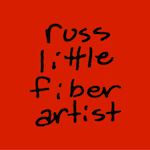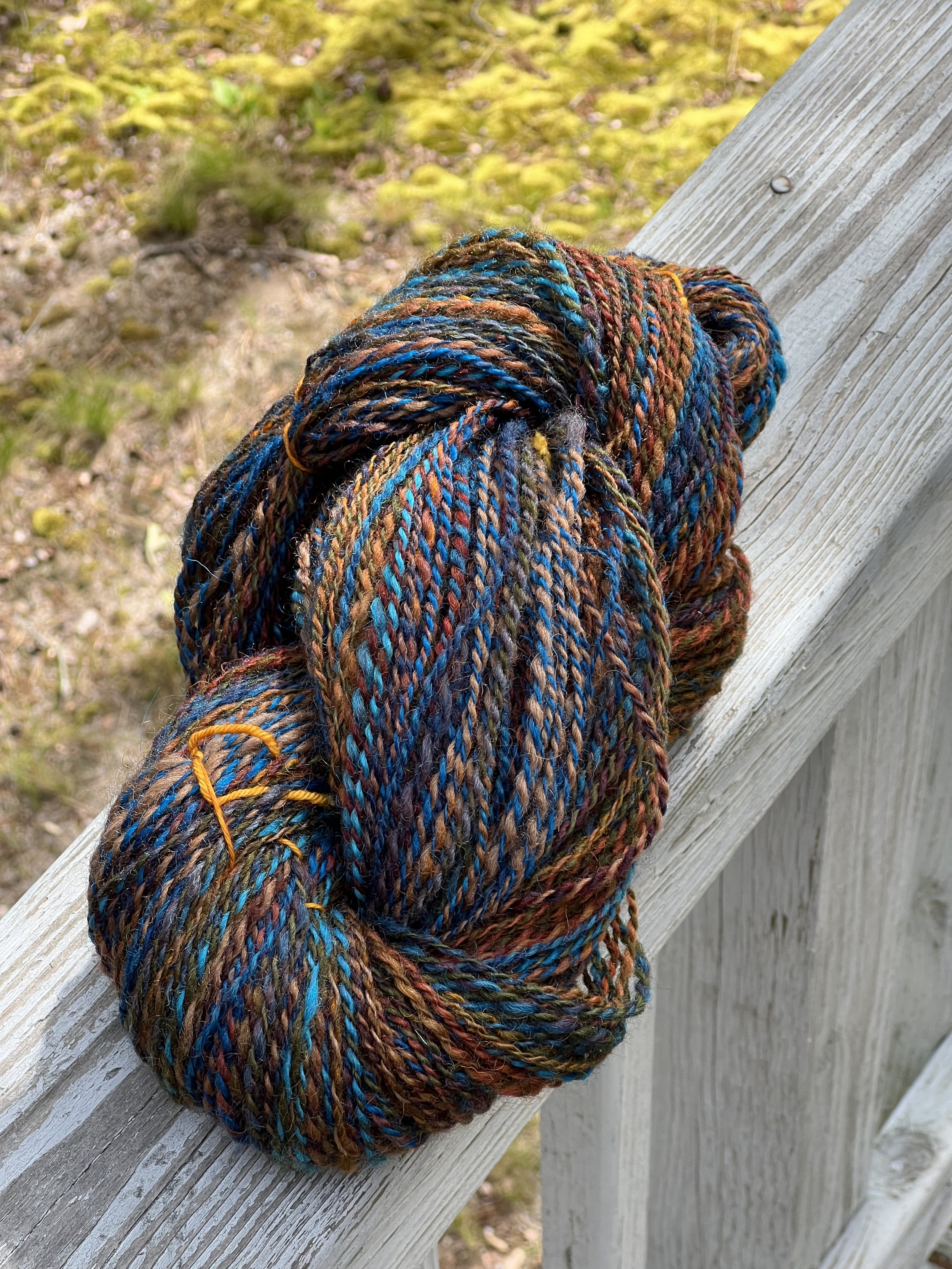Looking back at 2024
2024 has been a whirlwind, an emotional roller coaster, and a watershed year all at the same time. Certainly every year brings change; that’s inevitable. But, some years bring more than others. In my opinion the election was a disaster, and one that we’ll be unpacking, processing, and trying to rise above for many years to come. I just want to acknowledge that because it’s something that affects every one of us. But, in this look back over the last 12 months I’m going to focus on my year in the studio.
I’m not doing this to strut around saying “Look at me.” Instead, this writing helps me reflect on the plans I made and how they do or don’t line up with what came to pass. This reflection is the first step toward contemplating what comes next in 2025. And, it’s also a nice way of sharing an update with those who haven’t been along for the entire ride. Be forewarned: because I’m mostly writing for myself this post will likely be on the longer and wordier side. Feel free to skim or just look at the pictures. :-)
For many years I’ve tried to hold the month of January as a time to think and explore new things. I’ve found that asking “What if…,” and “I wonder…” questions without focus on making any particular art or completing any specific task quite often reveals a path forward that I might not have considered if I had just charged ahead. Of course there’s no reason for this to happen at the end of the calendar year. I could do this at the Summer Solstice or some other arbitrary time, but January works quite well. Curiosity and learning keep me engaged through the darkest days of winter when so many of us struggle, and that’s helpful.
Best laid plans
Early in the year several ACN colleagues and I participated in a short workshop offered by a fellow ACN member titled, “Dream Big.” Our goal was to visualize a point in the future—five years, ten out—and describe in one page of writing what that looked like. How was our work/life balance? What was happening in the studio? What goals had we achieved? Where were we living? All of those things. We then assigned relative values of importance to those things and began listing what it would take to get from where we are now to where we want to be then. We also turned those areas of interest, goals, and tasks into a Venn diagram for the coming year. It was a visual representation of the size, content, overlap, competition, and conflict between the various parts of our lives. For me it proved to be a great way to distinguish between the things that must happen, those things that are achievable, and those that are aspirational. Have you ever written a way-too-long to-do list? If so, then you likely know the value of finding focus. I can’t say that the relative success of 2024 is due entirely to the Dream Big exercise, but I will say that narrowing my focus and placing my projects in a longer term context seemed to keep me on track.
Interaction #5. Hand dyed cotton, hand woven, machine quilted, embellished with hand spun yarn and buttons.
Weaving
My January curiosity this year led me to take a 2-day intro to weaving class at a local fiber shop that’s walking distance from home (well, not really in January). I went into it with no expectation other than I would learn new things—I’d never woven anything other than a potholder in elementary school—and I was absolutely not interested in producing anything. The instructor said that we would be weaving a scarf, which she all but guaranteed we would absolutely love when it was finished. Much to my surprise that’s exactly what happened—and I loved the weaving process and the flow state that happened as I worked. By May I had added an 8-shaft Schacht Baby Wolf floor loom to the studio and since then I’ve been searching for a balance between quilt making and weaving.
I knew going into the loom purchase that this was a problem/opportunity that I’d be wrestling with.
Was I becoming a weaver? Yes.
Was I going to let the weaving influence the quilting? Maybe.
Could I somehow combine the two? Again, maybe, but was that a good idea.
Over several months I created four finished art pieces that are handwoven, quilted, and include additional embroidered details. I learned a lot along the way, but in the back of my mind I kept wondering if I was trying to drive a square peg into a round hole. I believe that the answer is “So far yes, somewhat.” I had a good critique with David Hornung and came away thinking that, although the pieces like Interaction #5 (right) are visually interesting, there might be a bit of a struggle going on between the complex will weaving pattern and the graphic composition.
I’m not unhappy with any of the woven quilted pieces, but I think I’m going to explore some other ways of working with my handwoven cloth that might not include quilting. I’m particularly interested in Moorman inlay, and I think that might be my January exploration for 2025.
Spinning
As if the weaving wasn’t enough, I took a one-evening drop spindle spinning class because I was curious about swimming a little bit further upstream from cloth. Now that I could make my own cloth, could I also make the yarn that I used to weave? The drop spindle taught me humility. I know some people love those things, and I’m not one of them. I really did try. I found myself thinking that this was something that I could live well without, but I still couldn’t shake the interest. So I bit the bullet and bought an e-spinner, which is an electric spinning “wheel”. There is no wheel, per se. It’s just an electric motor that rotates a flyer and bobbin. I figured this was compact, easily resold if I hated it, and my last chance. Either I was going to succeed or I was going to make my peace with not being a spinner. Of course I loved it. I spun like a fiend, bought a raw fleece fresh off the sheep at the Maryland Sheep & Wool Festival, which I then cleaned, dyed, combed, spun, and wove, Since I’m really not interested in learning to raise or shear sheep, I have likely arrived as far up the textile supply chain as I’m willing to go. In September I purchased a Schacht Matchless spinning wheel. It’s a proper double treadled dual drive wheel. It’s been a real joy, but as with so many things, spinning is something that’s easy to learn and a lifetime journey to master.
Natural dyeing
If there was a wrong turn or a time when I should have paid closer attention to my Dream Big plan, then I would have to say it was when I signed up for a 12-week online class on using natural dyes. It wasn’t an entirely misguided adventure. I have lots of friends who’ve done the same course and raved about it. Natural dyes (those based on plant material, minerals, and insects (yes, bugs) produce some beautiful, complex colors. I’ve spent years developing some level of facility (can I say mastery?) with fiber reactive MX dyes, and I’m applying that learning to washfast acid dyes for wool. Both of these are chemical dyes. Well, let’s cut to the chase. The natural dyes take a lot of time and effort. They’re also a bit of a mess. Yes, the colors are nice enough, but after 12 weeks of work (1-2 days each week) I can now say that I am not a natural dye person. Give me some good ole better living through chemistry.
Collage
As autumn approached so did a long-planned-for workshop at the Crow Timber Frame Barn with David Hornung, this one billed as “Collagapaloosza”, which was a somewhat ridiculous name for a 2-week collage open studio workshop. I and most of my fellow students were a cohort of long-standing color, composition, and collage students of David’s. We worked side by side, listened to lectures, ate wonderful food, had stimulating conversations, and enjoyed the beauty of the farm. In terms of artwork, we all did our own thing under David’s watchful eye.
I was anxious going into the class because I hadn’t been working on collage or painting all year. I was really into my weaving thing and I wanted to do work that would feed that. I just wasn’t sure how that was going to work. I told David ahead of time that I was planning to explore weaving with paper and he was supportive. So that’s what I did. The result was not what I expected. I arrived with a couple of test compositions that I’d used to work out the method, adhesive, etc. For the first few days I produced compositions of woven structures that visually hovered over the background. By the end of the two weeks (below) I was producing a series of geometrically similar compositions, each playing with some aspect of color or contrast, AND the contrast was getting lower and lower. It was interesting because I’ve never stuck so closely with a single idea for that long in a workshop. So, what began with anxiety about how I would reconcile different aspects of my studio life ended with both learning and some interesting ideas that I think I can apply to weaving.
Workshop collages on the wall at the end of week 2.
Exhibiting
It’s been a good year for exhibiting artwork, and it feels like I’ve received more acceptances than rejections—though I try not to count.
“Interaction #3” was included in “Artist as Quiltmaker XX” in Oberlin, OH.
Mark Rengers Gallery in Sewickley, PA selected 8 of my pieces to include in a two-person show titled, “Making Me.”
Art Quilt Network shows continue to tour and I just had two pieces juried into the latest show, “ReVision.” One of those pieces is "Interaction #5” (above), which is one of the new handweaves.
And, the biggest news of all is that I’ll be returning to Quilt National in 2025 for the third time with “More Than Black & White #4.”
There are other things in the planning stages for 2025, so I’m feeling pretty optimistic.
A friend shared an important thought recently (and I’m paraphrasing here):
We make art because it’s our imperative, our calling. We strive to show it because it’s how we connect with the world. Rejection letters hurt, but we dust ourselves off and keep going because that’s what artists do.
Now what? And why?
I will definitely repeat the “Dream Big” planning work that I did in January 2024. Weaving will be my focus in January, but also beginning some new digital paintings that will become quilted textile. Earlier this year I was anxious about weaving displacing quilt making. I spent time trying to figure out how to make quilted artwork out of handwoven cloth. Now I feel that I might be moving toward two different modes of work coexisting in the studio and influencing each other without having to BE each other.



